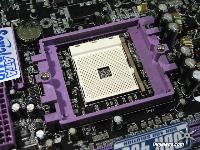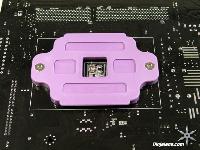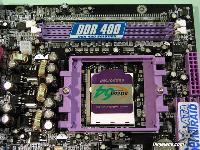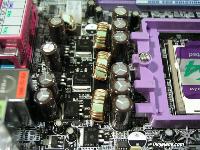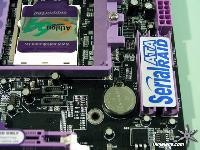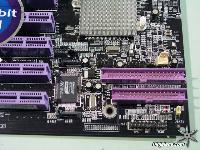After careful consideration I have decided to transfer all hardware review activities to a new domain. I purchased Hardwareasylum.com in 2012 and have been working hard to build a new and improved Ninjalane on that domain. If you are reading this you have reached one of the archived articles, news, projects and/or reviews that were left behind during the site migration.
Please update your bookmarks and be sure to visit the new and improved Ninjalane at Hardwareasylum.com
Soltek SL-K8AN2E-GR Motherboard Review
Author: Dennis Garcia
Published: Wednesday, September 15, 2004
Board Layout and Features
Typical Soltek naming conventions tell us that the SLK8AN(2E-GR) is a rev 2 motherboard based on the same chipset, knowing this we can be fairly certain that many of the onboard features will have been enhanced due to either new chipset technology or upgraded parts.
The SL-K8AN2E-GR supports all of the current Althon64 754 pin processors meaning that the board will feature a single channel DDR400 memory interface. As you can see from the photos the motherboard only supports 2 DDR DIMM modules; while this was done for performance reasons it also limits memory expandability.
The power supply is a standard 3-phase design with a mountain of capacitors; The 4 pin power connector is located towards the top of the motherboard and almost completely avoids crossing over the heatsink.
One of the major enhancements to the nForce3 250Gb is the integration of Serial ATA and Serial ATA RAID into the MCP. Soltek has provided 2 IDE channels and 2 Serial ATA channels as part of the chipset. However the fun doesn't stop there the GR models come with a Promise PDC20579 Serial ATA RAID controller that brings another IDE channel and 2 more Serial ATA channels into the mix. While you cannot RAID across controllers on the BIOS level you can create an effective RAID 10 (or 100) inside Windows using dynamic disks. (ie. Two hardware mirrors at the BIOS/driver level then stripe the disks in Windows, you won't be able to use the entire disk using this process you can add some serious speed to the system while retaining hardware level redundancy.)

